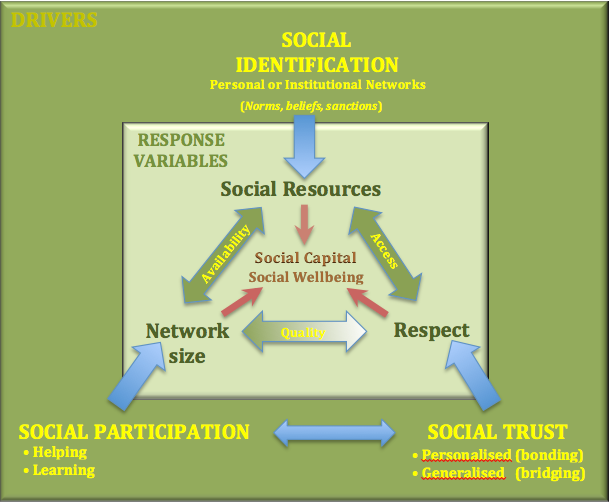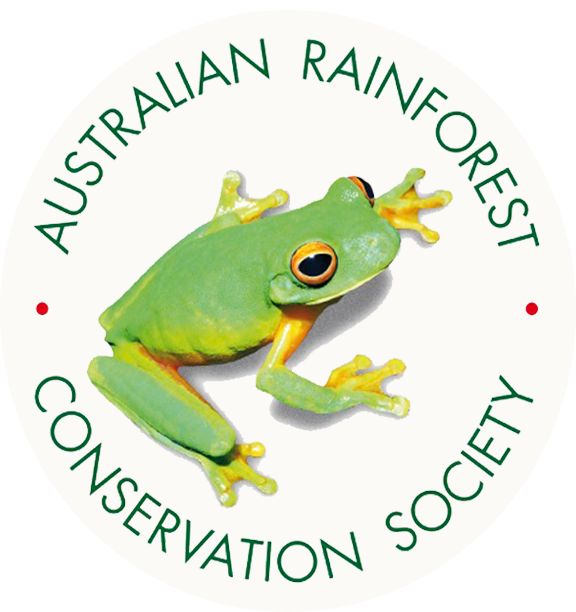|
Science Conceptual Models
Social Conceptual Models
Protection and restoration of nature is recognized as fundamentally related to human well being in the Millennium Ecosystem Assessment , the World Heritage Convention, the Convention on Biological Diversity and Australia’s Biodiversity Conservation Strategy 2010-2030.
One of the explicit goals of Springbrook Rescue is also to ensure that World Heritage serves a function in the life of the community by contributing to social and economic wellbeing. We share a vision of:
“A vibrant community of residents and visitors sustaining and sustained by World Heritage values, and a mostly natural landscape that inspires and revives the human spirit” |
The outcomes we need to accomplish in order to achieve this vision need to be explicit, measurable, time-bound and evidence based.
Ecological and social wellbeing are generally considered to be based on social norms, networks (both formal and informal) and generalized or bridging social trust that facilitate social learning and cooperation for environmental gains and the mutual benefit of members of society as a whole. Understanding and promoting wellbeing within a social-ecological systems framework is still an emerging science but there is general agreement on the critical nature of social learning and social trust (Brondizio et al. 2009, Newig et al. 2010, Pahl-Wostl 2009, Reed 2008, Reed et al. 2006, 2009, Tong et al. 2011). Without social trust, many good environmental policies risk failure at the outset (Dinesen 2011, Jones et al. 2010). Without social learning long-term sustainability of the World Heritage Area itself cannot be guaranteed.
Whereas theories help explain and frameworks help organize information relating to social ecological systems (Wyant et al. 1995) conceptual models are one of the most helpful tools for transparently planning, testing and monitoring a communication and engagement strategy.
Informed by current theories (particularly Tong et al. 2011 and Reed et al. 2006, 2009) and data gathered while working through our decision framework, we have created a model analogous to our ecological conceptual model which identifies the primary drivers and response variables affecting social capital and social and economic wellbeing.
It helps us think more systematically about how best to communicate and engage with the local and broader communities as well as monitor the effectiveness of that engagement in achieving social learning upon which realization of the vision depends.

In essence our strategy includes steps aimed at:
- greatly improving knowledge and understanding (a vital component of Social Resources) available to networks that help people achieve what they value doing and being;
- providing people rich and rewarding opportunities to work and learn together, fostering participating in rebuilding a World Heritage area in an atmosphere of mutual respect, thus
- extending and bridging networks built on trust and shared norms and beliefs that foster long-term social and ecological wellbeing.
Monitoring and evaluating the effectiveness of our communication and engagement strategy directed towards social learning ideally requires the involvement of research institutions who would see it as a useful case study to advance knowledge in this growing field.
References
Brondizio, E.S., Ostrom, E. and Young, O.R. (2009). Connectivity and the governance of multilevel Social-Ecological Systems: The role of social capital. Annual Review of Environment and Resources 34, 253-278.
Dinesen P.T. (2011). A note on the measurement of generalized trust of immigrants and natives. Social Indicators Research 103, 169-177.
Jones, N., Evangelinos, K., Halvadakis, C.P., Losifides, R. and Souphoulis, C.M. (2010). Social factors influencing perceptions and willingness to pay for a market-based policy aimed on solid waste management. Resources, Conservation and Recycling 54(9), 533-540.
Newig, J., Gunther, D. and Pahl-Wostl, C. (2010). Synapses in the network: Learning in governance networks in the context of environmental management. Ecology and Society 15(4), 24. [online] URL: http://www.ecologyandsociety.org/vol5/iss4/art24/
Pahl-Wostl, C. (2009). A conceptual framework for analyzing adaptive capacity and multi-level learning processes in resource governance regimes. Global Environmental Change 19, 354-365.
Reed, M.S. (2008). Stakeholder participation for environmental management: A literature review. Biological Conservation 141, 2417-2431.
Reed, M.S., Evely, A.C., Cundill, G., Fazey, J., Glass, J., Laing, A., Newig, J., Parrish, B., Prell, C., Raymond, C. and Stringer, L.C. (2006). What is Social Learning? Ecology and Society 15(4): r1. [online] URL: http://www.ecologyandsociety.org/vol15/iss4/resp1/
Reed, M.S., Graves, A., Dandy, N., Posthumus, H., Hubacek, K., Morris, J., Prell, C., Quinn, C.H. and Stringer, L.C. (2009). Who’s in and why? A typology of stakeholder analysis methods for natural resource management. Journal of Environmental Management 90, 1933-1949.
Tong, K.K., Hung, E.P.W. and Yuen, S.M. (2011). The quality of social networks: Its determinants and impacts on helping and volunteering in Macao. Social Indicator Research 102, 351-361.
Wyant, J.G., Meganck, R.A. and Ham, S.H. (1995). A planning and decision-making framework for ecological restoration. Environmental Management 19(6), 789-796.
|
 Springbrook Rescue
Springbrook Rescue
 Springbrook Rescue
Springbrook Rescue
